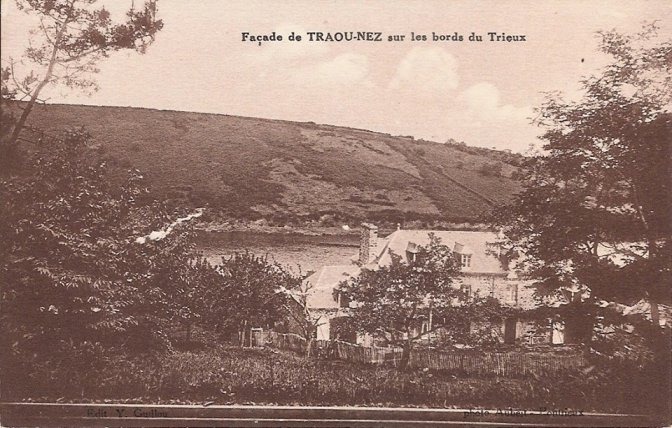1500 years of history
The name of Plourivo comes from the old Breton "ploe" (parish) and perhaps from the name of saint "Rivou", which was dedicated a chapel near the Bourblanc. It is an old parish that included not only the current territory of Plourivo, but also those of Yvias and Kerfot.
The parish of Plourivo, although not served by the abbey of Beauport, is mentioned as early as 1205 in the Charters of this abbey which possessed many goods there. In 1205, Conan younger brother of Alain d’Avaugour founder of Beauport, donated to the abbey tithes Plourivo (which will be collected in the twelfth sheaf until 1790) and two mills and two fisheries. In 1250, Rivallon son of Conan offered premonstrated his domain of Villa Aufredi which will become Castel Auffret.
Some plot names, such as Douar-Manach (land of the monk) or Douar-Nabat (land of the abbot), mark the influence of the abbey in Plourivo. In the fourteenth century the parish of Plourivo passes in the seigniorial jurisdiction of Rohan, heirs of Penthièvre-Avaugour, and will remain there until the seventeenth century.
By an act of 1577, Louis de Rohan consents to Jehan Chef-du-Bois the afféagement of various woods and moors in the parish of Plourivo and Yvias. In 1624, Louis de Rohan grants the rights of chatellenie, jurisdiction, high, middle and low justice, pre-eminence and honorary rights in the parish of Plourivo (Plourivou), Kermaria and Saint-Jehan to Yves Roquel, president of the Parliament of Brittany and lord of Bourblanc. The seigniory of Bourblanc becomes then the most important lordship of the parish.
In 1748, the lordship of Bourblanc was bought by a merchant owner of Paimpol, Jean Armez (1704-1786). With his sons Nicolas and Louis Marie, his grandson Charles and his great-grandson Louis, the Armez family remained at the head of the parish and the town since 1748 until 1917!
The old parish of Plourivo depended, as today, on the bishopric and jurisdiction of Saint-Brieuc. Plourivo elects its first municipality on January 31, 1790.
Seznec case
Plourivo is frequently known through a court case that has been making a lot of noise for a century. This is the Seznec case. Indeed, the missing, Pierre Quémeneur, general counsel in Finistère, was during the first war
World owner of the mansion of Traou Nez. It was said that this mansion, with 90 hectares of wood, was sold to Guillaume Seznec, himself owner of a sawmill in Morlaix (29). The two men, however, embark on another project: the resale after the war of cars left in Brest by the US military. It seems that during the driving of a vehicle to Paris that Quémeneur disappears without a trace. Seznec will be accused and sentenced to prison, although he has always claimed his innocence. The search for Quémeneur’s body has had an episode in the woods of Penhoat, remembered by the oldest inhabitants. But the mystery remains profound.
Today, the manor of Traou Nez barely get rid of his nickname "House Seznec". However, it has become a pole of environmental education called "House of the Estuary".
Tentative Bibliography
Jules Le Chapelain: "The Crosses of Plourivo", Journal of Paimpol 1907. Olivier Pagès: "Crosses and Calvaries of Goëlo Maritime", p. 163-168 and 255-264. Nicole Chouteau: "Plourivo", Côtes-du-Nord Emulation Society, Memoirs of the year 1984. Annie-Claude Ballini: "Nicolas Armez, a Côtes-du-Nord blue", 1990. Annie-Claude Ballini : "The battle of Plourivo, myth or reality", Côtes-du-Nord Emulation Society, 1994. The heritage of the Côtes-d’Armor communes, Flohic editions, 1998, p. 802-805.


